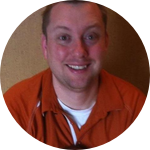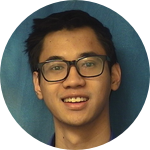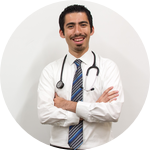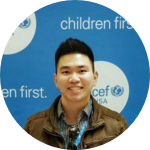About This Project
Diabetes is the leading cause of mortality and chronic kidney disease in Mexico with prevalence being the highest in Hispanics of Mexican origin. In patients with type 2 diabetes at free clinics situated in rural Northern Mexico, determine the factors affecting diabetes knowledge and how education correlates with HbA1c and diabetic complications. Our goal is to innovate clinics to better snapshot uneducated patients who may be at risk of type 2 diabetes.
Ask the Scientists
Join The DiscussionWhat is the context of this research?
The relationship between health literacy and health outcomes in type 2 diabetes in the United States has been well documented. However, no interventional data exists describing the relationship between health literacy and HbA1c, as well as to diabetic outcomes in patients with type 2 diabetes living in under-served rural Mexico aside from studies in U.S.-Mexico border populations. Furthermore, it is unclear what factors go into shaping health literacy in these under-resourced communities. Our cross-sectional study aims to provide a comprehensive correlation between health literacy and HbA1c and diabetes complications in patients at free clinics in rural Mexico. Our long-term goal is to improve upon diabetes interventions at the clinics.
What is the significance of this project?
As of 2016, more than half of the U.S. Hispanics have limited English-language skills. The percentage of Spanish-speaking immigrants who reside at the border is unknown. Therefore, it is unclear how Spanish-speaking immigrants fare in health outcomes such as diabetes compared to although it is believed age, duration of diabetes, and health literacy factor into glycemic control. To date, no such study has extensively examined health literacy further than the U.S. Mexico borders. Understanding the relationship between a low literacy score and diabetes care in a minority population living in a economically poor rural environment will help close gaps in diabetes research.
What are the goals of the project?
We will need to fund an A1c machine and 100 blood and 100 urine kits in order to answer the bulk of the study. We will start the study presumably in the Fall (September). The duration of the study will be 4 months when we have collected a sample size of 100 patients. If the goal is not reached, we may reach out to other clinics for collaboration. At 6:00 a.m. there will be a meeting at the respective institution. The research group will convene at 10:00 a.m. at the clinic and begin recruitment of participants with a translator. We plan to recruit 100 participants diagnosed with type 2 diabetes. After the informed consent, administration of questionnaires, physical exam, capillary venipuncture, blood and urine analysis will follow.
Budget
The hemoglobin cartridge kits and the urine kits essentially tackle two of our objectives. The first objective is the correlation between diabetes knowledge and Hemoglobin-A1c. The second is how diabetes knowledge may then correlate with certain diabetic complications such as nephropathy, which is where the urine kits and the specimen cups factor into this study. Likewise, neuropathy is also a complication so a monofilament is a clinically effective method of determining diabetic foot syndrome. The ultrasound machine is essentially part of a follow-up study and also a clinically useful tool we may use at the clinic to image cardiovascular tissue, retina, kidney, or even lower extremity in populations at risk of type 2 diabetes should the team find conclusive evidence of poor management and reduced medical education in patients type 2 diabetes.
Endorsed by
 Project Timeline
Project Timeline
We hope to conduct this project starting Fall 2018 following IRB approval; We will collect data from over 100 patients from across four different clinics in Mexico. It should be noted that the clinic trip dates will conflict so it is primarily up to the consensus of the research team which location they will travel collect data but the trips will always be on a Saturday of the month.
Apr 12, 2018
Project Launched
Sep 22, 2018
Travel to El Nino clinic with UC Irvine Flying Samaritans School of Medicine. We plan to screen and recruit 10-15 patients at this location.
Oct 20, 2018
Travel to El Testerazo with UC Irvine Undergraduate Flying Samaritans. We plan to screen and recruit 10-15 patients at this location.
Dec 22, 2018
Travel to Ejido Matamoros with the San Diego State University Flying Samaritans. We plan to screen and recruit 45-60 patients at this location.
Jan 19, 2019
Travel to Chapultepec Centennario with the University of Southern California Flying Samaritans. We plan to recruit 20-35 patients at this location.
Meet the Team
Team Bio
We are a team of self-motivated researchers who are inclined towards medicine and we focus in creating projects that range from but not limited to metabolic diseases, family medicine, and epidemiology.
Long H Tran
As a self-motivated research coordinator, my role is to coordinate with the sponsors of each rural clinic and attain approval. My experience in research includes initiation of a literature review, budgeting, and project design all the way to protocol narrative and consent writing and finally IRB application submission. Overall, my role in the project is to ensure administrative processes and modifications go smoothly. Once the application is approved, I will convert to an active role and begin recruiting patients, conducting physical exams along with a medical student, and running samples if appropriate.
Simran Kaur
Simran Kaur is one of our undergraduate student interns who has expressed in this project early on. She is currently majoring in biological sciences. Her roles and responsibilities include assisting the main research coordinator in administrative tasks.
Omar Gomez
As a motivated research assistant, my role is to coordinate and talk to the research team about our patient population. Most of the patients in this study speak the Spanish language. Being able to communicate in Spanish with the patients is one of the primary roles I am responsible for in this project.
Overall, my role in the project is to ensure patient understanding between patient and research team. Besides ensuring understanding between both patient and research team, I will take an active role and begin recruiting patients, conducting physical exams along with a medical student, and running samples when appropriate.
Hien Lau
As a research assistant, my role is to conduct literature review, assist in project design, apply for research grants and drafting IRB application. After obtaining IRB approval and funding, I will be traveling to the study sites to recruit patients, conducting physical exams along with a medical student, collecting samples, and analyzing data.
Project Backers
- 6Backers
- 5%Funded
- $157Total Donations
- $26.17Average Donation




